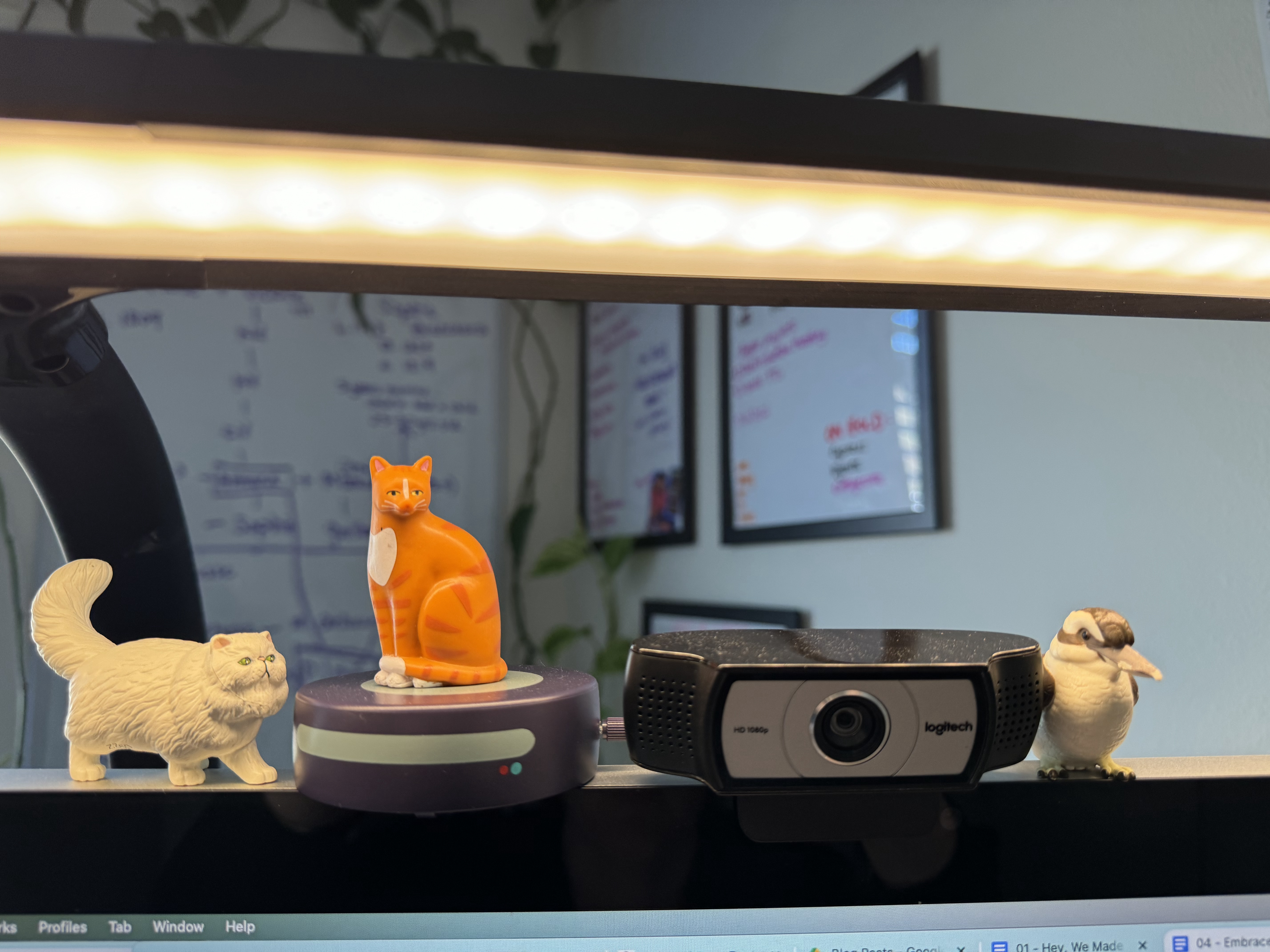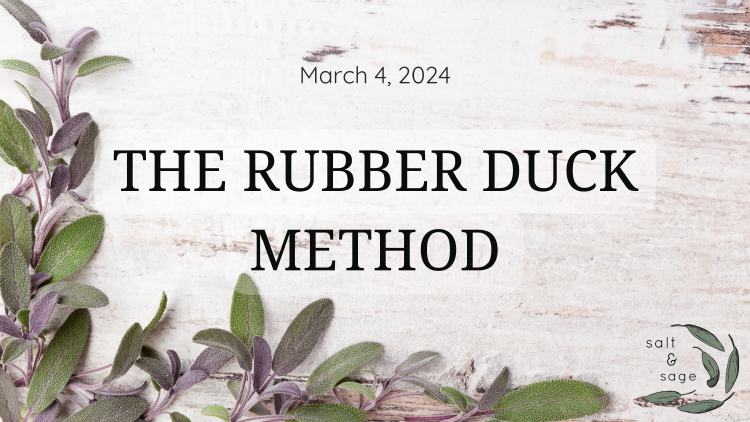We’ve all been there—staring at a blank page, fingers poised over the keyboard, that cursor blinking on an empty page like Sauron’s eye.
Okay, maybe that’s a bit over-the-top, but talk to any reader you know who has stared at a blank page for hours, and you’d be surprised how many of them would agree! It’s really easy to slip from actively writing to actively staring… and staring… and staring, hoping that the words are going to come back. Maybe if you stare a bit longer, you’ll know what happens next?
Enter the Duck
Despite my spouse working in tech, I first heard about the rubber duck method from Sachiko one day when we were venting about how we were both stuck on stories we were writing. She asked me, quite unexpectedly, if I’d like her to rubber duck. She used it like a verb (a true writer), and I was confused.
“What do you mean,” I asked, “when you say ‘rubber duck’?”
She explained the concept: programmers would keep a small rubber duck on their desk. When they hit a bug or a snag in their code, they’d shift their gaze to the duck and talk through their problem out loud.
“So, can I rubber duck for you?" she asked again.
Of course, I said yes. I talked through my problem. She didn’t interrupt; she hmm’d and oh’d and sighed with me… and after about 5 minutes of talking, I had a lightbulb moment.
“That’s what happens next! AH!”
She nodded sagely and said, “The duck always works.”
Duck One, Duck All
Does it have to be a duck? Of course not. I’ve got three trusty plastic friends on my writing desk: a persian cat figurine, an orange cat riding a wind-up roomba, and a kookaburra. None of them know how to quack, but they are all consummate listeners.

(If you’re ever on a video call with me and it seems like I’m making weirdly good eye contact? Yeah, I’m looking at the kookaburra.)
It doesn’t have to be a duck, and it doesn’t have to be a good writing friend. It honestly doesn’t have to be anything, although something about eyes (even painted-on) is helpful for me personally. It all boils down to the power of verbalizing your thoughts. When you say things out loud, you’re forced to organize and clarify them in a way that’s just not really possible if you’re stuck on the page.
The real magic of the rubber duck method isn’t the solution, though. It’s about having some sort of supportive, non-judgmental presence, whether that’s a duck, a cat, an Australia bird, or a friend. They’re with you through the process and, if you’re lucky enough to have a good writing friend, they might even ask the occasional insightful question.
Become the Duck
So what if you want to be the duck for someone else? A few rules to keep in mind.
First, the duck works because it’s plastic. We don’t need the duck to give us magical answers; we don’t even need the duck to nod approvingly! We just need the duck to listen. Obviously, your friend might want you to say more than a squeaky wheeze when squeezed, so get really clear with them up front what they need from you!
Second, let go of the idea that you need to solve any of their problems. They know the answers. It’s their story, after all! The answer they’re looking for is in there somewhere. The best thing you can possibly do is to ask questions and let them talk.
Third, believe in your friend. If this were your story, you’d write it differently, but it isn’t your story! Your friend might be eyeballs-deep in imposter syndrome, and you’re in the unique position to help heave them out of the muck and back onto their feet. Luckily, no swimming skills are required: you just need to believe in them.
I Have No Duck To Call My Own
Don’t you even worry, friend! We’re here for you, ready to lend an ear and a supportive quack (or meow or kooka-laugh) whenever you need it. You can schedule a video call with your favorite editor, email back-and-forth, and even have an editor give you a duck’s-eye view of your piece with a beta read.
So go ahead, embrace the quack, and let the words flow. With a little help from your trusty rubber duck—or cat figurine or kookaburra—you’ll be conquering writer’s block in no time.
And remember: you’ve got this. We believe in you.
To hear a more in-depth conversation about this, listen to our podcast episode!
















